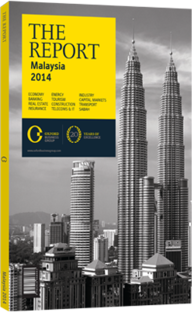Tweaking the rate: A new reference rate is due to be set by the central bank
Bank Negara Malaysia is instituting a new retail loan pricing system in 2015. The central bank will create a reference rate framework to replace the base lending rate (BLR), a benchmark that has become less relevant as banks offered discounted loans, especially mortgages, priced below the BLR. It is hoped that the reference rate reform will help both the consumers, by giving them more transparent and easily understandable pricing, and the banks, by enabling them to set a rate that more closely tracks their cost of funding.
The new rate will be known as the base rate, and it will be effective from January 2, 2015. It will be set by the banks themselves and, according to Bank Negara, will be calculated based upon the cost of funds at the institution and its statutory reserves. Bank Negara believes the reference rate should be better tied to funding costs so that it is a more realistic gauge for lenders and borrowers. The bank says that existing loans will still be tied to the BLR; only new loans and refinancing will use the base rate. Bank Negara also insists that the move is not an expression of monetary policy and does not indicate the future direction of interest rates.
Previous Reforms
The BLR has been reformed a number of times to make it more responsive. At first, in 1983, it was simply declared by the central bank and the commercial banks were allowed to deviate by a certain percentage. In 1987 a lead-bank system was introduced, whereby commercial banks were not allowed to deviate more than a certain percentage from the rate of two designated market leaders. In 1991 the central bank tried to tie the rate more closely to the cost of funds. In 1995 the BLR was linked to the three-month interbank rate and in 1998 it was pegged to the three-month intervention rate, considered more responsive.
The BLR dropped from a high of 12.27% in 1998 to a low of 5.51% in 2009. According to Bank Negara figures, the rate stood at 6.53% in January 2014. The average lending rate (ALR), however, has fallen below the BLR, standing at 4.53% in January 2014. This trend has been in the making for years. The ALR was higher than the BLR through December 2004, when they crossed at 5.98%. After that, the ALR started to descend faster than the BLR and by 2008 it was regularly and significantly below the BLR. According to the central bank, the BLR had lost its relevance. The rate, the bank has said in published comments, is no longer a good benchmark for lending. A wide range of costs is included in its calculation and these costs tend to distort the number so it is not very useful to the consumers or the banks.
The impact, effect and meaning of the new rate are still a matter of debate. Some in Kuala Lumpur say that it is expected that the BLR will begin to move upward ahead of the introduction of the base rate. They also say that the new rate is being formulated in the context of rising interest rates in the US and the need to keep capital within Malaysia.
Bankers, on the other hand, emphasise the context of the ALR and BLR discrepancies. They argue that it is important to note that it is the intense competition for loans that has driven the ALR below the BLR.
KLIBOR
Bankers speculated early on that the Kuala Lumpur Interbank Offer Rate (KLIBOR) would be used to calculate the new base rate. Some banks, such as Standard Chartered, already have mortgage products linked to that benchmark, and argue that in many ways it is better than BLR. For instance, it is transparent and published daily in the newspapers.
Using KLIBOR does come with its own set of problems, however. Among them are that is not well known and that it is highly volatile. Though banks will generally only adjust products based on KLIBOR every three months and will use an average, the fluctuations in the underlying rate could lead to confusion amongst borrowers. An accountant quoted in a local newspaper also noted that KLIBOR can be manipulated.
If rates do increase as a result of the introduction of the base rate, business will slow but margins will increase for the banks. It is expected that rates in general will increase in 2014, with the overnight policy rate forecast to rise to 3.5% as inflation builds in the economy.
You have reached the limit of premium articles you can view for free.
Choose from the options below to purchase print or digital editions of our Reports. You can also purchase a website subscription giving you unlimited access to all of our Reports online for 12 months.
If you have already purchased this Report or have a website subscription, please login to continue.

